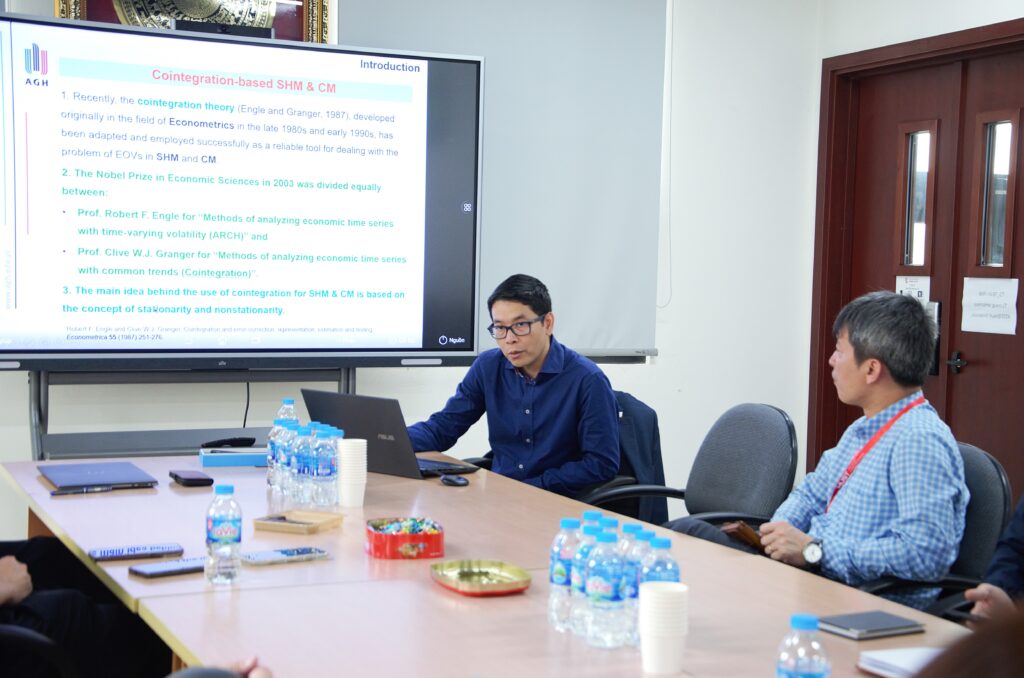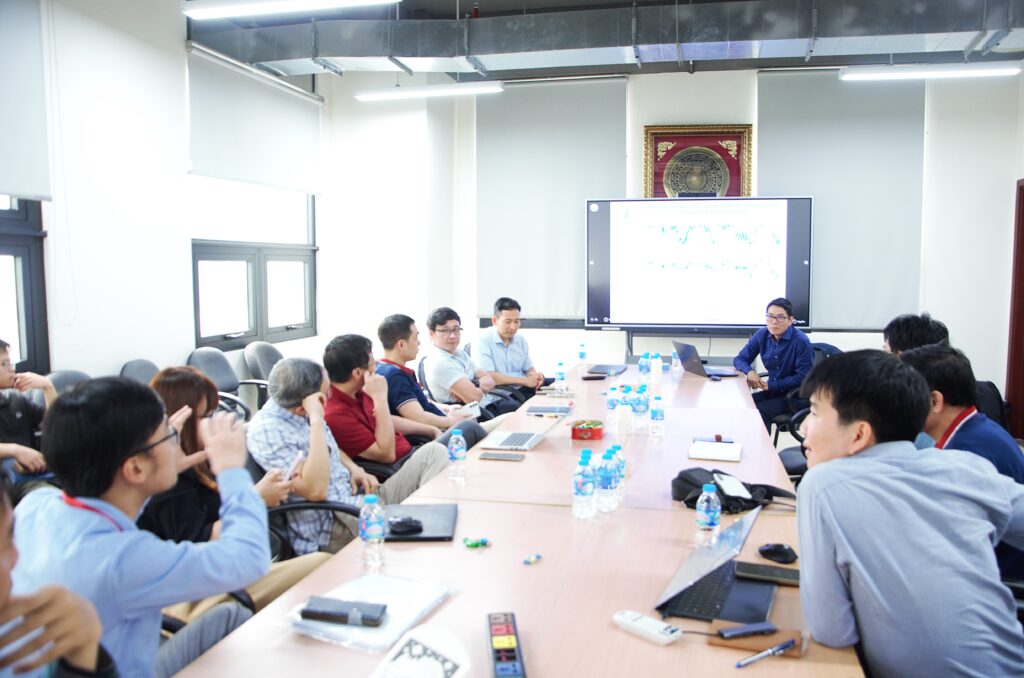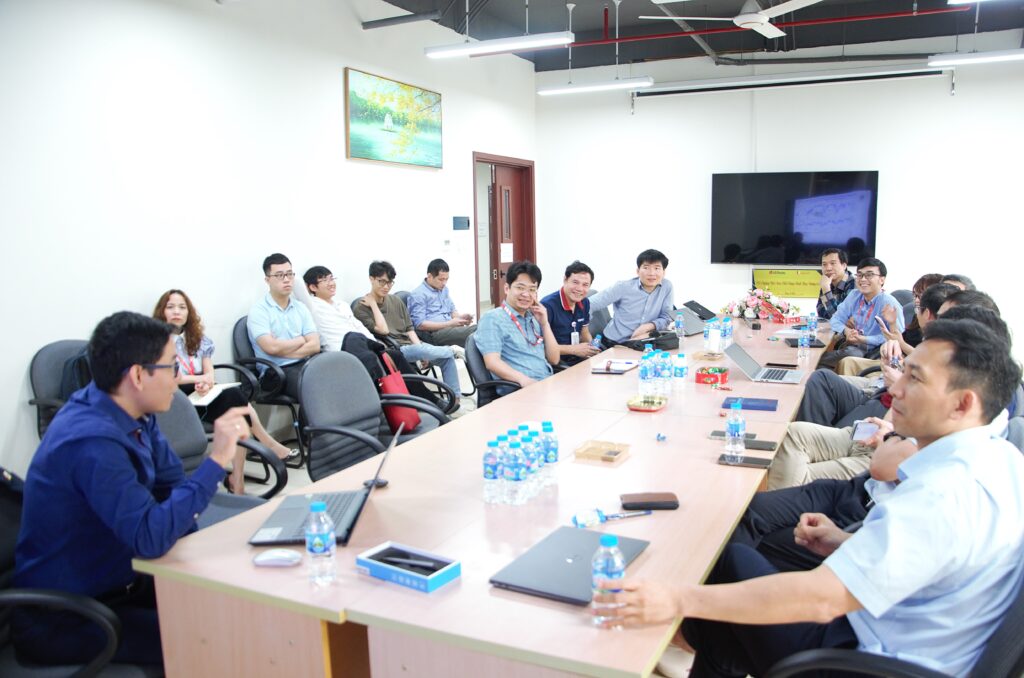Sáng ngày 11/4/2025, trường Cơ khí đã tổ chức buổi hội thảo khoa học tháng 4 tại phòng C7 – 602M.

Đây là buổi hội thảo thường xuyên được trường Cơ khí tổ chức dành cho các nhà khoa học, Thầy cô cán bộ nhà trường trao đổi nhưng thông tin học thuật, trình bày những nghiên cứu khoa học đang được triển khai nhằm tìm hiểu và triển khai hợp tác nghiên cứu chung.
Trong buổi seminar tháng 4, có sự tham gia trình bày của PGS.TSKH Đào Bá Phong đến từ Đại học AGH Krakow, Ba lan (AGH University of Krakow, Poland). PGS. Phong hiện là công tác tại Khoa Robot và Cơ điện tử, Khoa Kỹ thuật cơ khí và Robot của Đại học AGH Krakow, Ba Lan. Các hướng nghiên cứu của PGS. Phong về lĩnh vực: Predictive maintenance, Structural health monitoring (SHM), Data analysis, and Machine learning.

PGS. Đào Bá Phong trình bày tại seminar tháng 4 của trường Cơ khí
PGS. Phong đã xuất bản hơn 50 bài báo khoa học và đồng sáng chế bằng sáng chế châu Âu về SHM. Năm 2024, PGS. Phong được công nhận là một trong 44 học giả từ Đại học AGH Krakow được đưa vào danh sách 2% nhà khoa học hàng đầu thế giới về tác động trong một năm.
PGS. Phong đến trường Cơ khí làm việc trong chương trình “Erasmus+ Teaching Staff Mobility”. Đến với seminar của trường Cơ khí, ông đã trình bày về nội dung “On Econometric Approaches for Structural Health Monitoring and Condition Monitoring“. Đây là nội dung được nhiều Thầy Cô trường Cơ khí quan tâm, với những phần thảo luận sôi nổi.

Trao đổi giữa các nhà khoa học tại seminar tháng 4

| Abstract:
Structural Health Monitoring (SHM) and Condition Monitoring (CM) have become increasingly important across various engineering fields, including civil, mechanical, aerospace, and offshore structures. A key aspect of SHM and CM technologies is signal and data processing, which plays a crucial role in their successful implementation. Long-term monitoring of large and complex structures – such as bridges, buildings, ships, aircraft, wind turbines, and pipelines – presents the challenge of processing and interpreting vast amounts of collected data while accounting for the influence of environmental and operational variations (EOVs). When data used for damage or fault detection are collected under these changing conditions, false-positive and/or false-negative detection scenarios may occur. To address this challenge, most recently developed solutions have leveraged artificial intelligence (AI) and machine learning (ML) techniques, such as learning, classification, and adaptation. However, these solutions remain inefficient in handling the influence of EOVs. A promising alternative is to explore well-established time series analysis methods from the fields of econometrics and statistics. Despite their potential, this approach has yet to gain significant interest within the engineering community. Over the past decade, Prof. Dao has focused on developing statistics-based methods for SHM and CM. In this talk, three methods will be introduced: (1) a cointegration-based method for removing EOVs and detecting structural damage, (2) an Augmented Dickey-Fuller (ADF) test-based method for analysing data stationarity, and (3) a Wilcoxon rank-sum test-based method for monitoring operational states and enabling automated fault detection in wind turbines. |
Bài viết & Ảnh: HT

 English
English
![[SME] SEMINAR KHOA HỌC THÁNG 4](https://sme.hust.edu.vn/wp-content/uploads/2025/04/23-scaled.jpg)